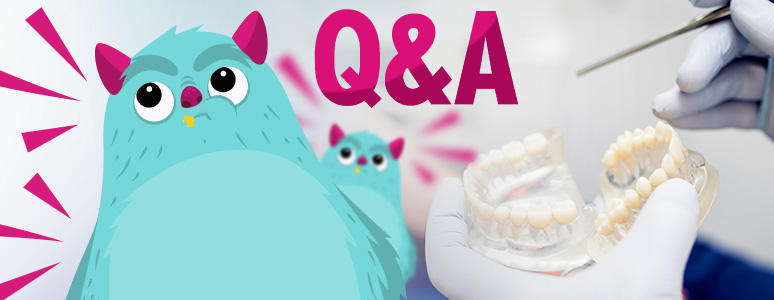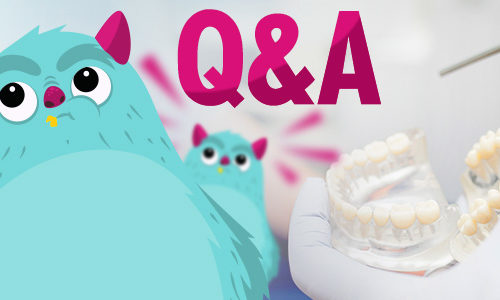-
My Spacers Hurt So Bad I Can’t Eat – What To Do About Painful Separators?
This article is a part of our Q&A series in which we give detailed answers to our readers' questions. Have a question? Don't hesitate and send it to us to get a detailed answer! Dental spacers, also known as orthodontic separators, are small rubber bands or small metal appliances placed between your teeth to create space for orthodontic bands. These spacers can sometimes cause discomfort or pain, especially during the first few days after placement. If the pain from your spacers is so severe that you cannot eat, this guide will help you manage and alleviate the pain effectively. Why Spacers Hurt Before delving into the management, it’s essential to…
-
Do Orthodontists File Your Teeth After Braces?
This article is a part of our Q&A series in which we give detailed answers to our readers' questions. Have a question? Don't hesitate and send it to us to get a detailed answer! Orthodontic treatment with braces is designed to align your teeth and improve your bite. After the braces are removed, some patients might notice that their teeth are not perfectly shaped or that the edges of some teeth are not even. In these cases, orthodontists might recommend a procedure known as teeth filing or interproximal reduction (IPR) to refine the shape and appearance of the teeth. This guide provides comprehensive information about this process. What is Teeth…
-
How Long Will My Teeth Feel Lose After Braces?
This article is a part of our Q&A series in which we give detailed answers to our readers' questions. Have a question? Don't hesitate and send it to us to get a detailed answer! Braces are a remarkable tool for aligning and straightening teeth, but they come with their own set of challenges. One common concern for many patients is the sensation of loose teeth after braces are removed. This guide will help you understand why this happens and what you can do to manage and care for your teeth during this period. Why Teeth Feel Loose After Braces Tooth Movement: Braces work by applying pressure to the teeth, causing…
-
Prognathism – Treatment Without Surgery, Causes, Skull, Radiology
Key Facts Prognathism refers to a positional discrepancy of the maxillary (upper) or mandibular (lower) jaw in relation to the facial skeleton and soft tissues There are mainly two types of prognathism: Maxillary prognathism where the upper jaw protrudes, and Mandibular prognathism where the lower jaw protrudes It can be caused by genetic factors, hormonal imbalances, or as a result of other conditions like acromegaly The treatment ranges from orthodontic braces to corrective jaw surgery, depending on the severity and underlying cause What is Prognathism in Upper Jaw and Lower Jaw? Prognathism (also called Habsburg chin, Habsburg’s chin, Habsburg jaw or Habsburg’s jaw) is a dental condition where there is…
-
Underbite vs Overbite, Teeth Surgery, Braces, Correction Before and After, Jaw Meaning
An underbite is a dental condition where the lower jaw extends beyond the upper jaw, causing the bottom teeth to protrude in front of the upper teeth. It’s a type of malocclusion that can lead to various oral health issues. Understanding how to diagnose and fix an underbite is crucial for both dental professionals and patients. Key Facts Underbite is a type of malocclusion where the lower teeth sit in front of the upper teeth when the jaw is closed It affects around 5-10% of the world’s population Underbites can range from mild to severe, affecting the appearance, oral health, and functioning of the jaw Genetic factors are a common…
-
Diastema – Teeth Meaning, Closure, Bonding Treatment, Celebrities
Key Facts Diastema refers to a gap or space between two teeth, usually the front teeth in the upper jaw Diastema can be caused by various factors, including genetics, mismatch between jaw and teeth size, habits such as thumb sucking, or gum issues In some cultures, diastema is considered an attractive trait, while in others, it might be seen as an aesthetic issue Treatment for diastema is not always necessary but depends on the underlying cause and personal preference Options for managing diastema range from orthodontic solutions like braces to cosmetic procedures such as dental bonding or veneers What is Diastema? Diastema is a term used in dentistry to describe…
-
Malocclusion – Meaning, Classification, Definition, Symptoms, Classes, Treatment
Malocclusion refers to the misalignment of upper and lower teeth and jaws, leading to various oral health complications. It encompasses a range of issues, from crooked teeth to severe jaw misalignment, and affects dental health significantly. Understanding malocclusion, its causes, types, and treatment options is vital for maintaining overall dental health. Key Facts Malocclusion, colloquially known as a bad bite, refers to any misalignment of the teeth or improper fitting of the upper and lower dental arches There are several types of malocclusion, including overbite, underbite, and crossbite Malocclusion can be a hereditary condition or can be acquired Besides affecting oral health, malocclusion can have implications for general health Treatment…
-
Root Resorption – Orthodontic Braces, Treatment, Causes, Meaning, What to Do
Root resorption is a pathological process involving the loss of hard dental tissue from the tooth’s root structure. It can occur internally within the root canal space or externally on the root surface. Understanding tooresorption, its types, causes, and treatment options is crucial for maintaining oral health. Key Facts Root resorption is a dental condition where the tooth’s root structure begins to break down and be absorbed by the surrounding tissues It can affect both primary (baby) teeth and permanent teeth There are two main types of root resorption: internal and external Root resorption can be caused by various factors such as trauma, orthodontics, cysts, and tumors Early diagnosis is…


